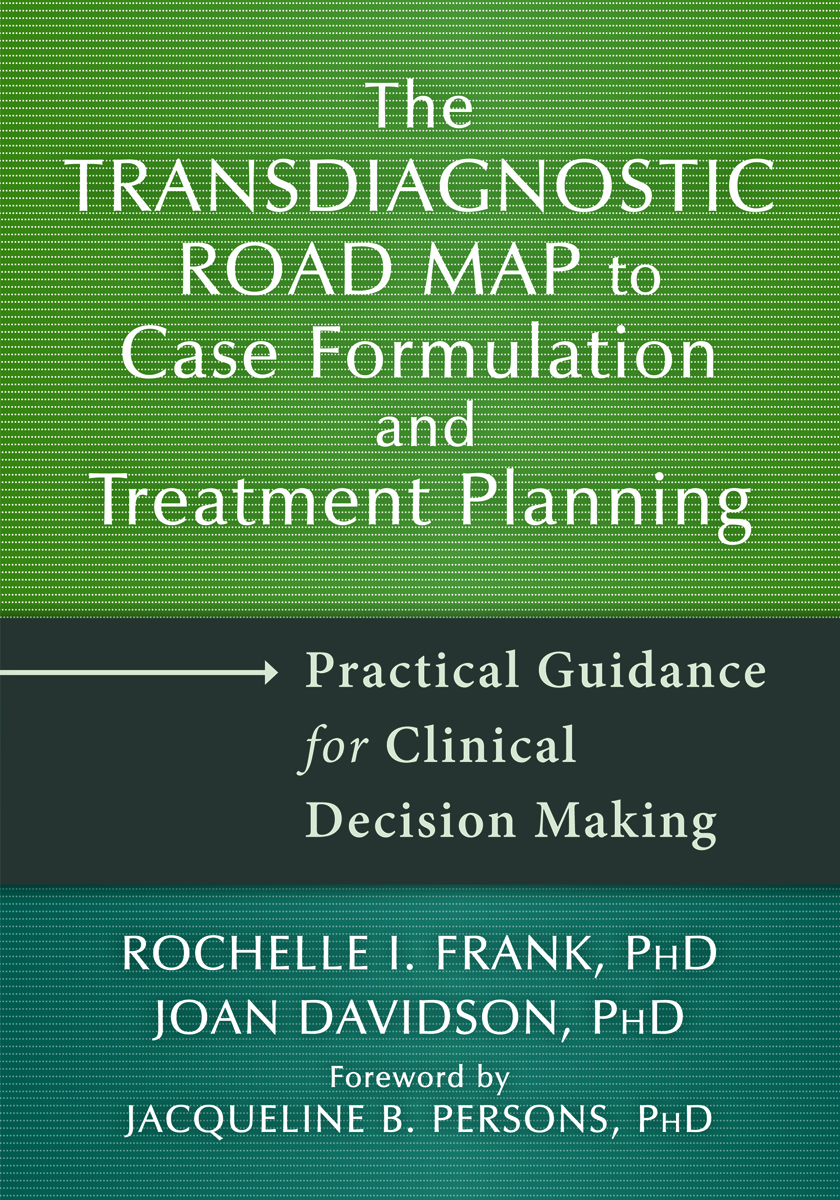By Rochelle I. Frank, PhD and Joan Davidson, PhD
Many clients have symptoms common to multiple diagnoses, and many problems don’t have prescribed treatments. The outpouring of research generating new therapies makes it virtually impossible for therapists to stay current, and we can’t become masterful in all the treatments available to us. Figuring out what to target, how to meet clients’ specific needs, and which interventions to use can overwhelm even the most senior clinician.
Case formulation offers an excellent start, but choosing which psychological mechanisms might underlie your client’s multiple problems can be a daunting task. It can be even more challenging to discuss them with clients in a way that’s understandable and collaborative.
This dilemma led my colleague and I to develop a transdiagnostic roadmap to guide treatment planning. Transdiagnostic mechanisms (TDMs)—many of which have been researched for decades—may be conceptualized as vulnerabilities (e.g., negative schemas, anxiety sensitivity) that increase our risk for certain problems like depression and anxiety, and characteristic responses to those vulnerabilities (e.g., rumination, avoidance) that feed back to perpetuate problems and functional difficulties. Thinking about problems as resulting from triggered vulnerabilities—leading to ineffective coping responses—simplifies and facilitates treatment planning and helps clients understand how TDMs fuel their problems. This offers the potential to reduce a client’s sense of “defect” and shame.
For example, if procrastination is explained by avoidance behaviors in response to neurological deficits, skills-training interventions—and perhaps medication—can create possibilities to learn effective strategies to cope with this vulnerability, thereby challenging a sense of failure. Similarly, if procrastination results from avoidance in response to perfectionism beliefs, interventions targeting these TDMs may help across a range of presenting problems. In short, mechanism-based conceptualization and treatment planning enhances therapy and gives individuals lifelong tools for understanding and mitigating risk factors, recognizing problems early, and choosing healthier ways of responding to them.
 Rochelle I. Frank, PhD, is a clinical psychologist in Oakland, CA, where she maintains a private practice providing psychotherapy, professional consultation, supervision, and training workshops. She is also an assistant clinical professor in the clinical science program at the University of California, Berkeley.
Rochelle I. Frank, PhD, is a clinical psychologist in Oakland, CA, where she maintains a private practice providing psychotherapy, professional consultation, supervision, and training workshops. She is also an assistant clinical professor in the clinical science program at the University of California, Berkeley.
Joan Davidson, PhD, is codirector and founding partner of the San Francisco Bay Area Center for Cognitive Therapy and assistant clinical professor in the clinical science program at the University of California, Berkeley.

 2024 Peace Playbook: 3 Tactics to Avoid Clashes with Your Partner
2024 Peace Playbook: 3 Tactics to Avoid Clashes with Your Partner